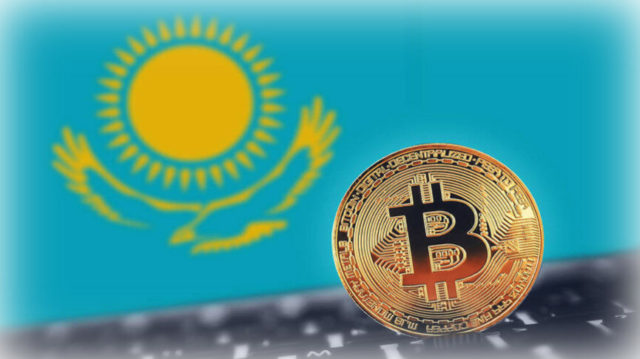The most famous kiss of nature lives under threat in the Cerrado. The risk is the hummingbird, who seeks the nectar of a plant and then spreads the pollen through the woods. Deforestation and climate change are modern and concrete villains against this “love scene” so natural. The warning is by Biologist and Nature Photographer Marcelo Kuhlmann.
After 10 years of research and immersion by the biome, considered the “cradle of the waters”, Kuhlmann recorded no less than 41 species of the bird, which resulted in a 750 pages book, “cerrado in colors: attractive flowers for hummingbirds”, the result of these flagrants who performed on the “richest savannah in the world”.
“It is a robust book, with 750 pages, and I decided to organize it didactically, according to the colors of flowers and its flowering time,” said the researcher. The work was published independently by the author’s own publisher, Biom Field Guides, produced with hardcover and special finish. The book featured crowdfunding to be printed.
Threat
For Kuhlmann, the biggest threat to the Cerrado is deforestation, mainly focused on agribusiness. “Despite all its importance to Brazil’s economy, it is not being done in a totally sustainable way.”
The researcher regrets that, in the last 70 years, the country has lost more than half of the native vegetation of the biome. “When I travel the Cerrado, behind these native vegetation permanences, I spend hours for monocultures, soybeans and corn, losing sight of it. This puts at risk all biodiversity.”
In his studies, Kuhlmann evaluates that it is necessary to follow the effects of climate change on these birds, because the flowering period of plants can change their behavior.
“Each species has a right time to flourish. If we, for example, want to keep a pollinators population, such as hummingbirds, there must be flowers throughout the year.”
The biologist explains that, although they are active all day, hummingbirds are daytime animals, especially in the colder periods of the day. The warm day can affect, even in the competition of floral resources with other animals, such as bees.
Powerful eyes
Kuhlmann’s research initially sought to identify the hummingbird species that occur in the Cerrado and which flowers attract birds. In a survey, Kuhlmann and other scholars discovered a kind of bromeliad in the Chapada dos Veadeiros who was all flowery and orange surrounded by hummingbirds. “It caught my attention. Since that time, I’ve been wanting to know more which flowers are the most attract.”
He explains that, in the Cerrado biome, there are 41 species of hummingbirds of the 89 that have already been found in Brazil.
“We have the species that are more frequent, which occur throughout the biome, and other rare species of occurrence only localized, such as those that occur in Serra do Espinhaço.”
Kuhlmann highlights the fact that hummingbird has a very keen and developed color vision. “These are animals that can see even ultraviolet and have a much larger visual spectrum of colors than ours.”
Colorful and flashy flowers have this effect of attraction of hummingbirds and other birds. “But also small and discreet flowers also attract animals. It caught my attention during the study.”
One finding is that the flirting of hummingbirds in the Cerrado aims at a greater variety of flowers, all shapes and sizes and all colors. The reason is that, besides the colors, the hummingbird goes straight to the subject: behind nectar.
Powerful planting
According to the researcher, Beija-Flores are fundamental pollinating. They work in this ecological service for the Cerrado plants in conjunction with several other animals, such as bees, moths, butterflies and bats.
Many of the flowers that hummingbirds visit are also attractive to other pollinating animals. In the Cerrado, it is estimated that 80% to 90% of native biome species depend on animals for flower pollination. “In the book, I recorded here over 300 native species that attract hummingbirds. Of these 300, at least 100 depend more on hummingbirds.
Nipple
The shape of the hummingbird varies, as explained by the researcher.
“All this reflects an evolutionary ecological relationship. With the flowers, there has been a coevolution relationship. Species have evolved over thousands of years to establish these ecological relationships.” Therefore, biodiversity is important, says Kuhlmann. “Now, if there is only one species of plant dominating an area, it tends to decrease the amount of birds.”
For him, the image of a gray cerrado is wrong, although this is no longer the oasis 70 years ago, as he described, for example, João Guimarães Rosa, in Grande Sertão: Veredas, published in 1956.
“Here in Brazil, we value our native species very little,” said the researcher, who traveled regions in the Federal District, Goiás, Minas Gerais and São Paulo, Bahia, Mato Grosso and Tocantins. “The loss of the cerrado can lead to Brazil a large water deficit. The cerrado is the cradle of the waters of Brazil. So, it requires a lot of attention from all Brazilians.” And of course, the conservation of the animal that kisses the most.
Among the rare findings, spotted in the last Raiar do Sol, then more than a week of expedition in Chapada dos Guimarães, the researcher was happy to register the Phaethornis Nattererior a-yellow-white tail. “It occurs there at the Cerrado border with the Pantanal.” Of rare kisses, the forest is also made. The purpose of the book is to give visibility to these animals with the maxim that it is not possible to conserve without knowing. In this scenario, of course, the more kisses, the more the flowers open and the Cerrado illuminates.
For him, the image of a gray cerrado is mistaken, although this is no longer the 70 years ago, as he described, for example, João Guimarães Rosa, in “Grande Sertão: Veredas”, published in 1956.
See also: Cerrado deforestation can impact water cycle
From deforestation to warming: how Brazil impacts the global climate
This content was originally published in Beiper Birds are threatened in the Cerrado, says researcher on CNN Brazil.
Source: CNN Brasil
Charles Grill is a tech-savvy writer with over 3 years of experience in the field. He writes on a variety of technology-related topics and has a strong focus on the latest advancements in the industry. He is connected with several online news websites and is currently contributing to a technology-focused platform.







